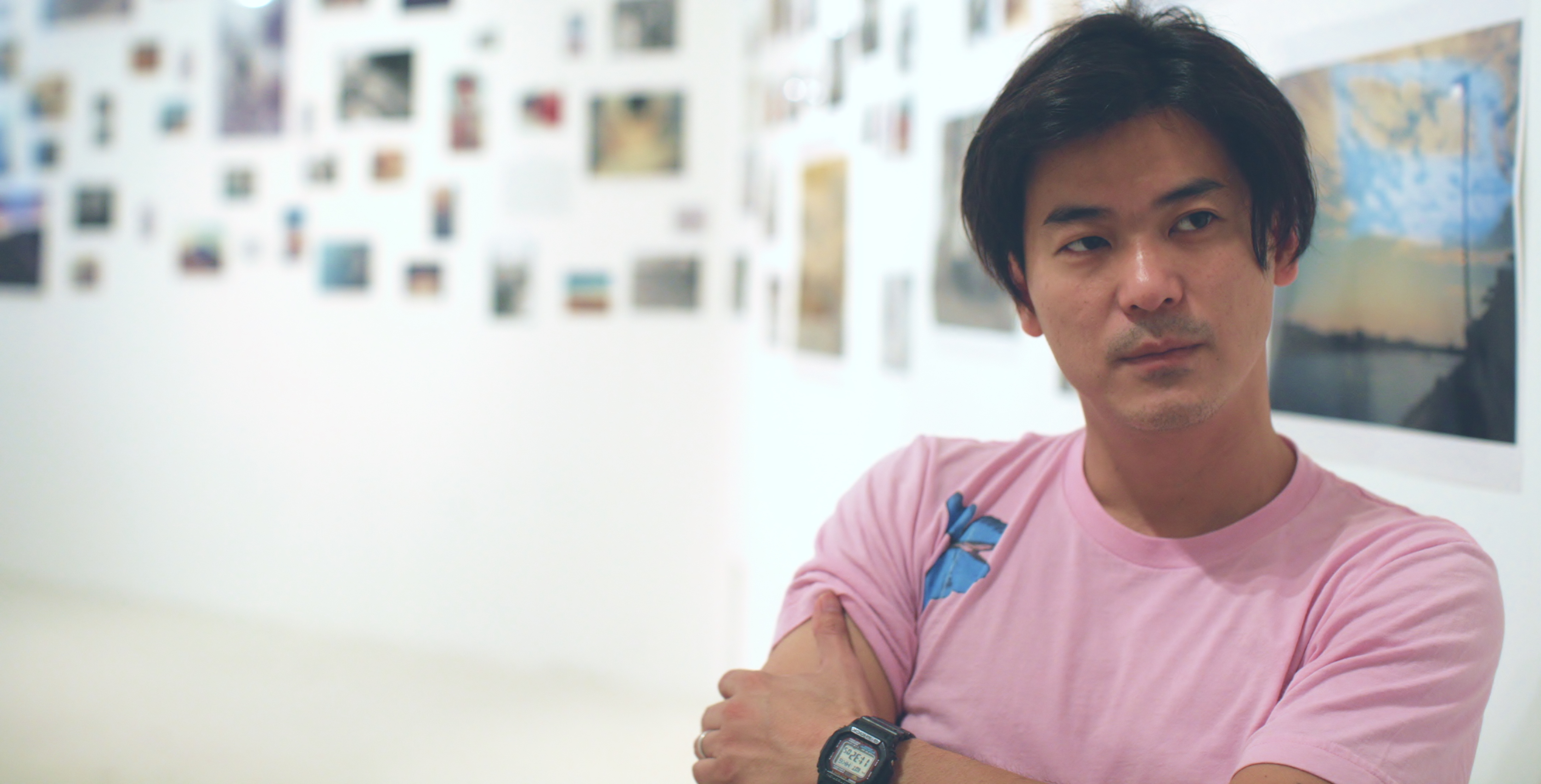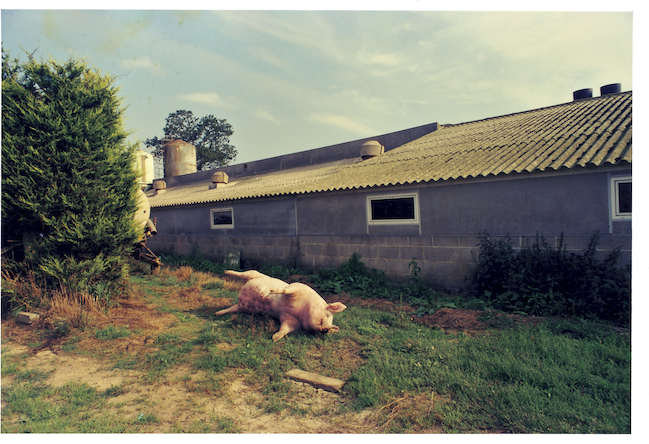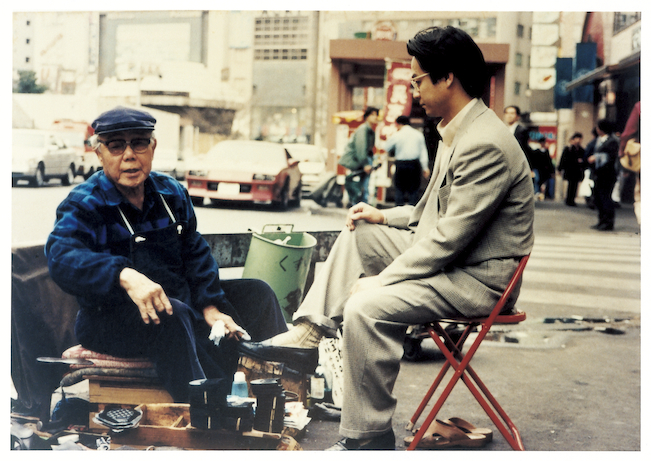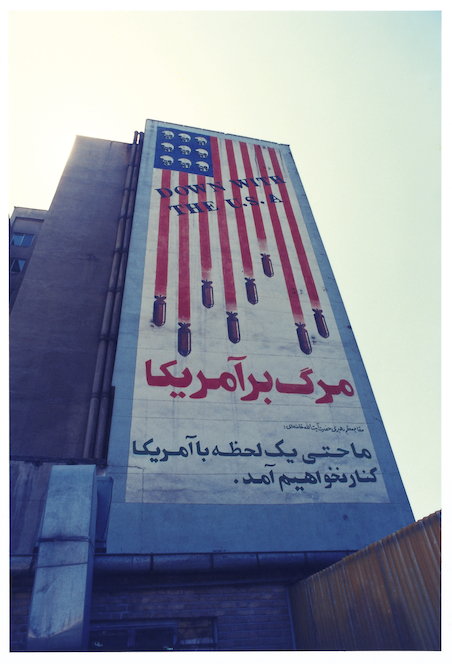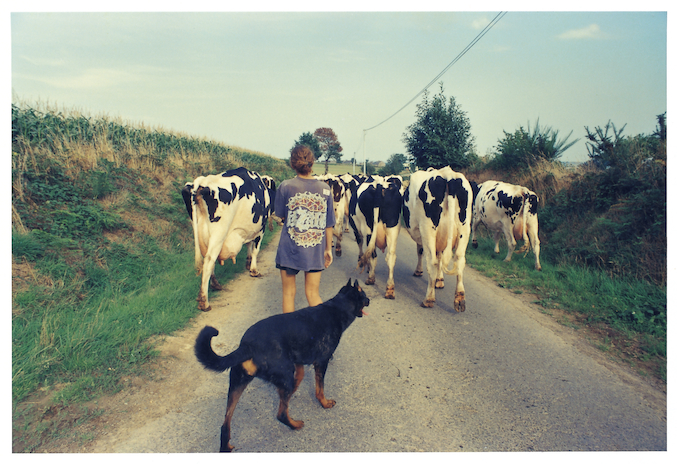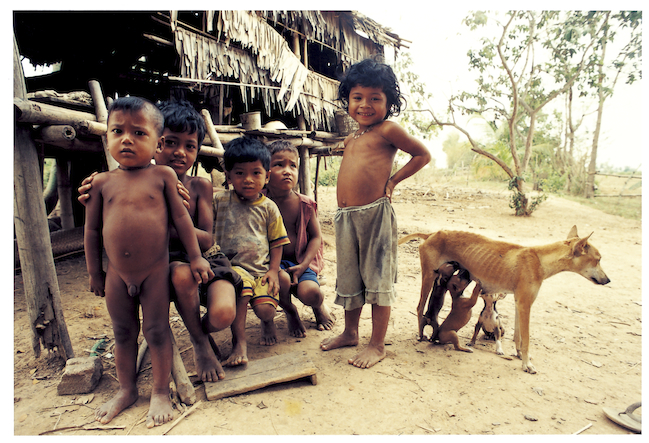He forced Sarah Jessica Parker to smile for him, broke the silence with Pharrell Williams by comparing his Nixon watch with Williams’ big diamond watch, got a stern nagging from Japanese film’s current godfather, Takeshi Kitano, became fed up with Liam Gallagher’s reticence, and asked the godmother of punk, Patti Smith, if he could date her.
Yet despite the dozens of international stars that have been captured by his lens, Singaporean photographer ND Chow keeps returning to his roots – photography inspired by everyday people doing their thing in far off places, big-city alleyways, grimey streets and inhospitable places you wouldn’t want to send your enemies to.
His latest exhibition – borne out of three years of going nomad on a whim with friends after his conscription, throwing away his return ticket, abandoning his friends at the airport and raising his camera to his eye to document his endless travels around the Middle East, South Asia, North Africa, Europe and Central Asia – is quintessential Chow. It’s far from the big corporate assignments he oversees and conceptualises for some of the world’s biggest brands and magazines featuring even bigger stars and notables in Japan, where he is based.

“All these old travel photos, these raw images, they are very important to me. Without this I would not be a photographer right now. It’s such a good reference book to myself, what we see right now, it is so related. Like the fabrics in this photo, the scarf, the colour, the stitching, the landscapes, they are all so related,” said Chow as he swept back his boyish haircut from his forehead to point to pictures documenting his wanderlust as a young adult.
He talks further about his travels in France and life on a farm, seeing hungry, homeless children being senselessly beaten by their hungrier mothers fighting with them over food donations in India, being cheated by cunning children in Central Asia, stared down by neighbourhood teens in Harlem for being a photographer, and getting almost killed in Iran on two occasions for trying to defending his female friend’s modesty when she was molested by teens.
“I slapped the teen and scolded him, and then a big group of guys came over to find out what was wrong and they wanted to beat me. But when I told an old shopkeeper what happened, he walked up to the teen and slapped him as well. Then, it was over,” Chow recalled of the day he photographed the Down With The U.S.A mural on a Tehran building.
But ask Chow to expatiate on his ongoing experience with the world’s biggest stars and how he breaks the ice with them with his odd idiosyncrasies, and the 39-year-old photographer, who “reads people”, will be happy to ramble on, but only if he trusts or connects with you.
“Patti Smith was very interesting,” said Chow in a mashed-up Japanese and English twang, a result of living 16 years in Japan and his three years’ worth of nomadic travels.
“Nero magazine’s editor in chief called me up and asked if I wanted to shoot Smith. In recent photos at the time, I had not seen a picture of her laughing. So I decided to shoot her in a very happy, laughing way.
“When we were doing our shoot, I did not want to see her face. So I put up my tracing paper to hide her face, trying to create a silhouette of her so I could just feel her mood and energy.”
Smith obliged but wasn’t prepared for what was going to happen next.
“She asked me what I wanted her to do. ‘What do you think of Tears For Fears?’ I asked her. She said it was one of her favourite bands.
“Then I asked her if she cries. She said she does, and then she said, ‘But I smile a lot too’. And she decided to smile, and I got it. I asked if I could take her to a date in Shibuya and she hit my arm jokingly and she laughed, and she thought I was weird and she laughed, asking me why I would want to date an old lady. I quickly snapped.
“Then I asked what she was wearing beneath her clothes, and she laughed but was shocked. Then I gave her a rose, and she bit the rose. I was searching for the youth and pureness of a woman.
“Suddenly, she asked me if I was ready, and she took all the petals from the rose and threw it up in the air for me to shoot, signalling that we were done.”
In that moment with Chow behind the lens, Smith treated it like a jam session, where she and Chow would go back and forth trying to outdo each other with weirdness.

But there was nothing weird or much to laugh about Chow’s early life – born out of wedlock and being the only child, having to keep the home together while his mother suffered from an illness in the later years while he was in technical institute. Chow never had much to begin with.
But armed with a Minolta X-70 he bought when he was a teen and taking a job in the resort island of Sentosa helping snap photos of families and teens, Chow discovered a love for portraits and photography. His first assignment was handed to him by a couple of Filipino magazine editors who told him to shoot the Bon Jovi concert for them. He did, and from there on, there was no looking back for Chow who developed an obsession of looking through the viewfinder to document life. He later got his career started by assisting his friend and fellow Singaporean celebrity photographer, Leslie Kee, in Japan.
And despite what seems like a glamorous life of working with the stars, Chow remains evidently humble, whether chatting to strange journalists like us or looking at his own career.
“I think the most difficult part of my life was supporting the family at 12, and having my mum supporting me as I grew up. It was a very important part of life for me. It taught me to take care of myself, all the demands, the people, the best friends,” said the photographer.
To re-establish his love for the woman who brought him up, Chow penned a moving letter at the exhibition to his late mother.
“I was not able to repay your love and care in this lifetime. Neither was I able to give you the security and good life I longed to, or buy you that new washing machine.”An excerpt from ND Chow’s penned letter to his mother
Chow’s determination burns as brightly as his love for his late mother, and despite all that he’s achieved, rest and laurels are the furthest from his mind.
“You think I’m established? I don’t call myself established,” said the photographer who photographs for Shiseido and who has photographed Japanese stars such as Ayumi Hamasaki and Yu Aoi.
Surprised at being called established, Chow said: “But to me I don’t think I’m successful because there is still a long way to go. I never get satisfied with myself. If I get 100 per cent satisfied, I will go flat or go down! If I get flat at 39, what about 50, what should I do?”
Perhaps Chow’s first attempt at a public photo exhibition is his way of reminding himself that he has yet to achieve more in life, and to establish himself in ways beyond photography. There is poetry in the exhibition with the way Chow arranges the space, repeating images to create a sense of de ja vu, to see a same image twice by chance, creating fragments of memories with every picture being a start and end point in his life, where there is no end.
“It’s more like space bouncing here and there for your imagination. You see something once and you may forget, and then you see it again,” said Chow.
“It helps you to move your brain, your mind. Usually in a gallery, you see one image and you chao (Hokkien for move on), so at least you come here and you see images that are repeated.”
– Additional reporting by Joyce Ng
ND Chow’s solo exhibition, Roots, is now on till June 15 at Objectifs at 56A Arab Street. At the venue, Chow will be holding a talk on Saturday, May 24, from 4.30pm to 5.30pm. His collection of photos from his travels pre-dating his professional career is also available as a book, art-directed by Theseus Chan, and distributed and sold by Books Actually.
